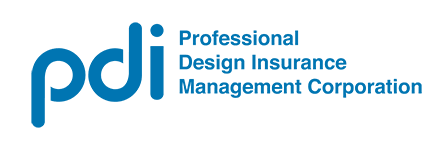The protection offered by Project Insurance and Owners Protective Insurance is very similar. But the route the two policies take to arrive at that protection are very different.
There are three routes an owner could take when insuring the design of a project:
Option 1
The first option is simply to accept the limits your design team already has in place with their firm’s professional liability policies. In most cases today, we are seeing contracts require the prime architect and all professional sub-contractors to increase their limits on a project-specific basis. Many believe this is the least costly option, but that is not necessarily the case.
There are significant costs to each design firm to increase their limits, and that cost will be multiplied by the number of the the contract requires. The downside to this approach on a large, complicated project is that each of the design teams’ policies respond only to that insured’s liability. If there is a design error on the project, the liability needs to be sorted out, and all of the insurance companies involved will be battling it out.
This process takes time and draws money out of the available limits. Additionally, until the issue is resolved, the owner of the project will have to put more money into the project to keep it moving. This option may end up being the most costly for the owner.
Option 2
The second option is an Owners Protective Policy. This type of coverage is essentially an excess policy. The underlying coverage is the limits the design team has in their individual practice policies. Under an Owners Protective Policy, the insurance company will require that each firm maintain a certain limit in their practice policy (MIR). This MIR requirement is generally $1 million. They will also require that a deductible (SIR) set for the Owners Protective Policy. Generally the SIR is set at $500 thousand.
In order for the Owners Protective limits to pay out, the SIR must first be met. The design firm responsible for the error would report this to their insurance carrier and their policy would respond to the SIR limit. Once this happens, the excess limits would be available. This type of coverage is generally less costly than a Project Policy. However, the same negatives apply to this option as those stated for Option 1.
Option 3
The third option is a Project Policy. This type of policy is written for the specific project and generally carries high limits of $3 – $25 million (or more). This coverage is primary, covers the entire design team and insures against professional errors, omissions or negligent acts. A big benefit of this policy is that once professional negligence has been determined, the policy responds to keep the project moving.
Not sure which option is the best for your client’s particular situation? Give us a call and we’ll talk you through it. (317) 570-6945
About PDI
PDI is an Indianapolis-based wholesale brokerage firm with a national network that includes thousands of insurance agents, brokers, architects, engineers and contractors in all 50 states. Since PDI’s beginning in 1980, we’ve handled a single line of coverage: errors & omissions (E&O) for design professionals. Contact Us today for a review of your design client's insurance program.

